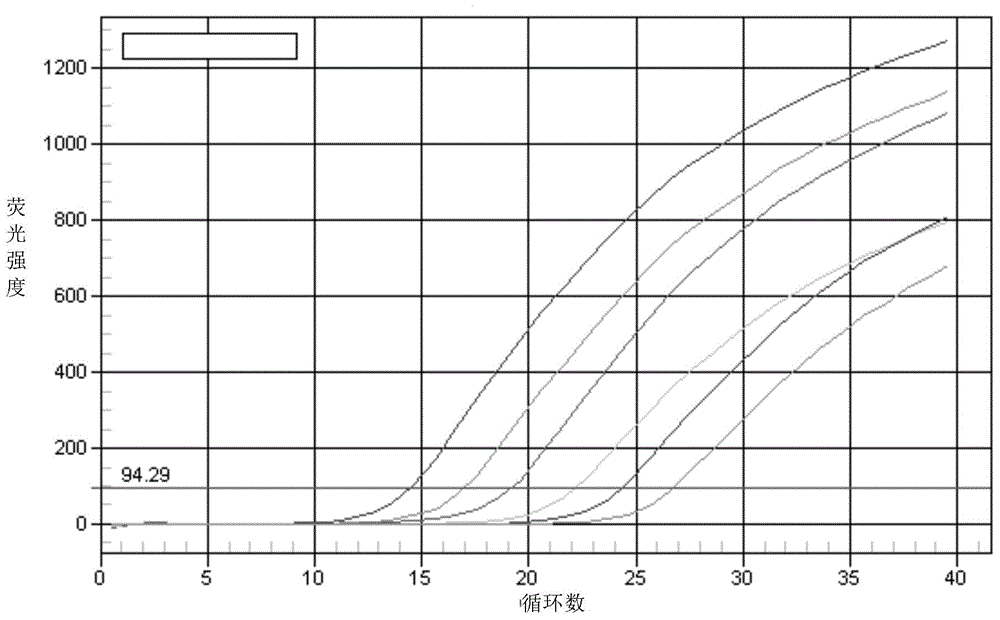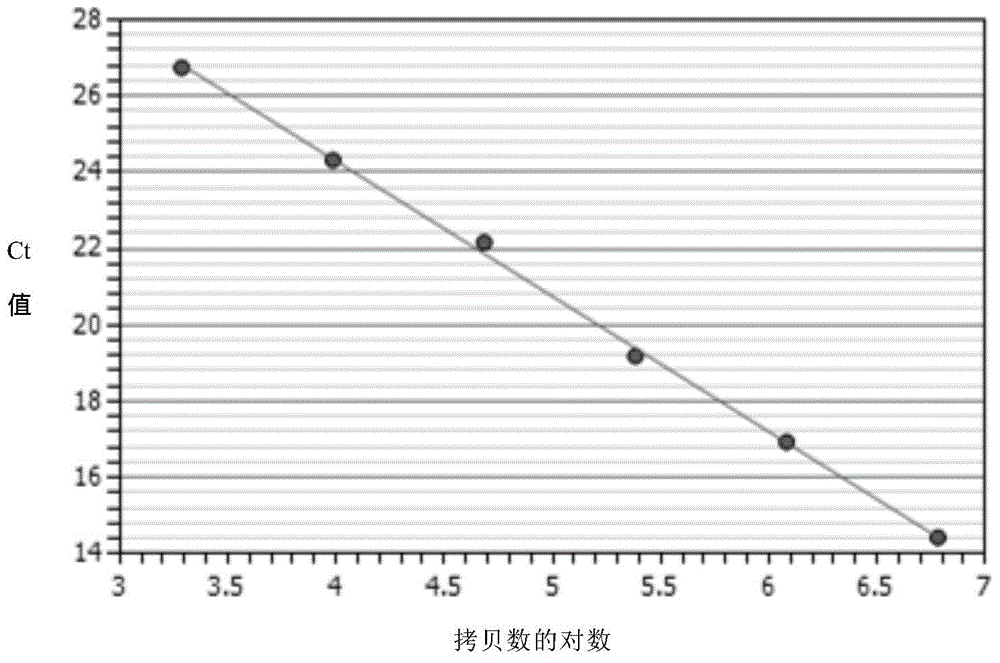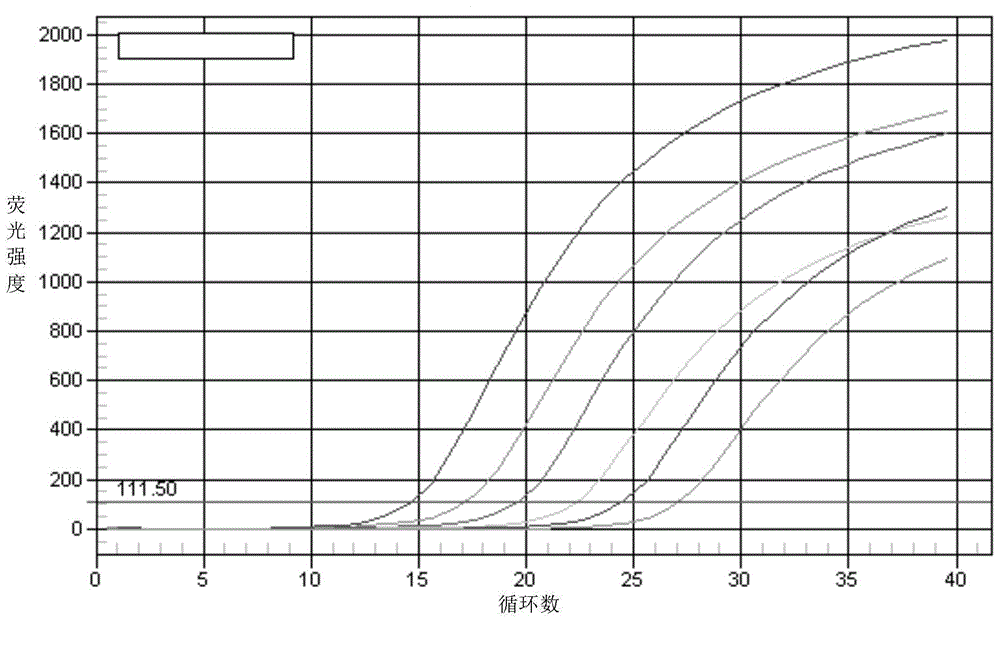Method for quantitative PCR detection of exogenous gene copy number in transgenic cell
A technology of transgenic cells and copy number, applied in the field of molecular biology, can solve the problem that the original DNA copy number cannot be calculated, and achieve the effect of accurate determination of gene copy number, high specificity and good linear relationship.
- Summary
- Abstract
- Description
- Claims
- Application Information
AI Technical Summary
Problems solved by technology
Method used
Image
Examples
Embodiment 1
[0045] The quantitative PCR detection method of embodiment 1 light chain gene copy number
[0046] 1.1. Plasmid DNA acquisition:
[0047] a) Design specific primers for the light chain gene: the nucleotide sequence of the specific forward primer JLc1F is: 5'-AGGACAGTGGCTGCACCA-3' (as shown in SEQ ID No.5); the specific reverse primer JLc1R The nucleotide sequence is: 5'-TCAACACTTCCTCTGTT-3' (as shown in SEQ ID No. 6).
[0048] b) Obtain the light chain pLc plasmid strain: use the light chain DNA of the complete antibody molecule as a template, perform ordinary PCR amplification to obtain the light chain Lc fragment of the antibody molecule, and then insert it into the psimple-19T vector to transform DH5α competent cells , obtained the pLc plasmid strain containing the antibody light chain gene.
[0049] c) After sequence determination, the pLc plasmid strain with a molecular size of 3016bp was obtained.
[0050] 1.2. Preparation of light chain plasmid DNA standard
[0051]...
Embodiment 2
[0079] Example 2 Detection method of heavy chain gene copy number
[0080] 2.1. Plasmid DNA acquisition:
[0081] a) Design the forward primer JHc-1F and the reverse primer JHc-1R for the heavy chain gene:
[0082] The nucleotide sequence of the forward primer JHc-1F is: 5'-ATGCTAGCAAGCTTCCATGGGCGTCGACAAAGGGACCATCTGTGT-3' (as shown in SEQ ID No.7); the nucleotide sequence of the reverse primer JHc-1R is: 5'-TAGGTACCTCGAGTCATTTACCAGGAGACAG-3 ' (as shown in SEQ ID No.8).
[0083] b) Obtain heavy chain pHc plasmid strain
[0084] Using the heavy chain DNA of the complete antibody molecule as a template, carry out ordinary PCR amplification to obtain the heavy chain Hc fragment of the antibody molecule, and then insert it into the T vector to transform DH5α competent cells to obtain the heavy chain pLc plasmid strain.
[0085] c) After sequence determination, a pHc plasmid strain with a molecular size of 3718bp was obtained.
[0086] 2.2. Preparation of heavy chain standard pl...
PUM
 Login to View More
Login to View More Abstract
Description
Claims
Application Information
 Login to View More
Login to View More - R&D
- Intellectual Property
- Life Sciences
- Materials
- Tech Scout
- Unparalleled Data Quality
- Higher Quality Content
- 60% Fewer Hallucinations
Browse by: Latest US Patents, China's latest patents, Technical Efficacy Thesaurus, Application Domain, Technology Topic, Popular Technical Reports.
© 2025 PatSnap. All rights reserved.Legal|Privacy policy|Modern Slavery Act Transparency Statement|Sitemap|About US| Contact US: help@patsnap.com



